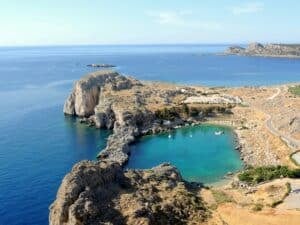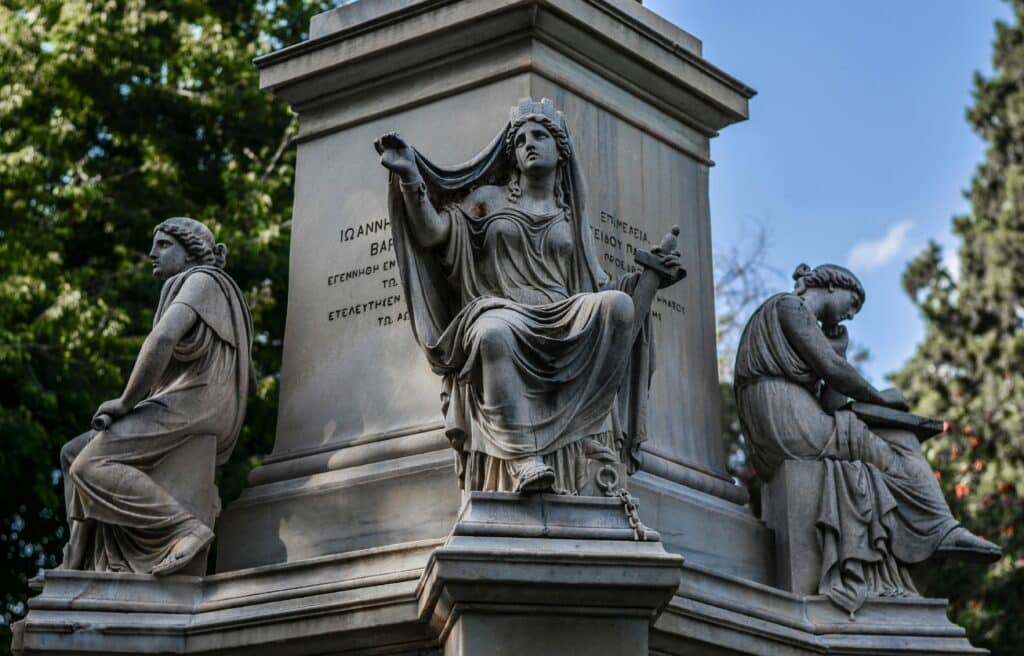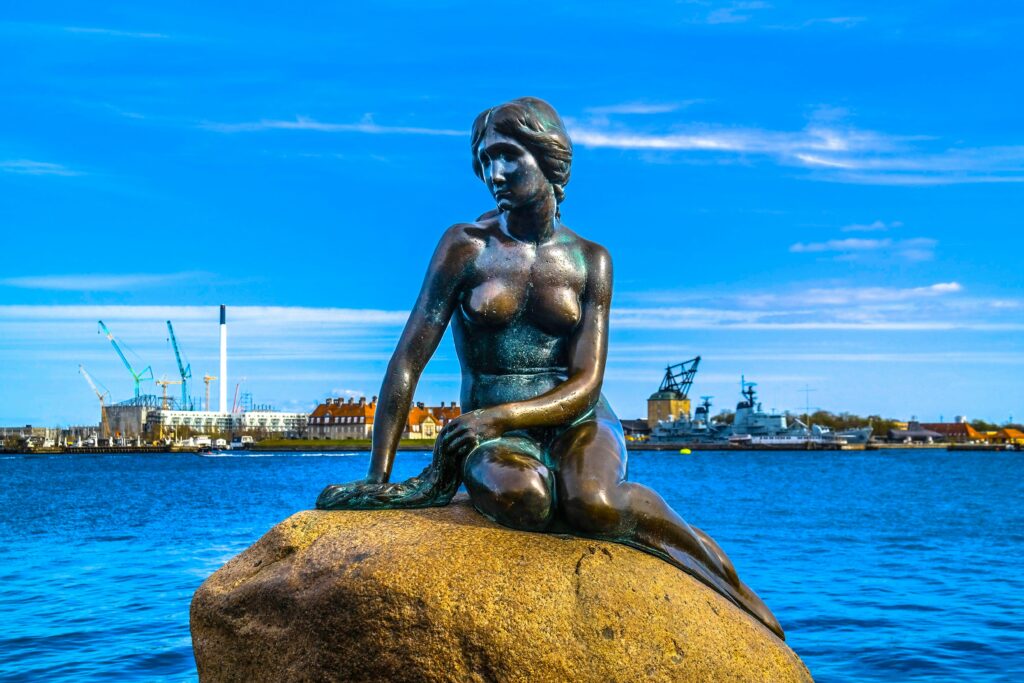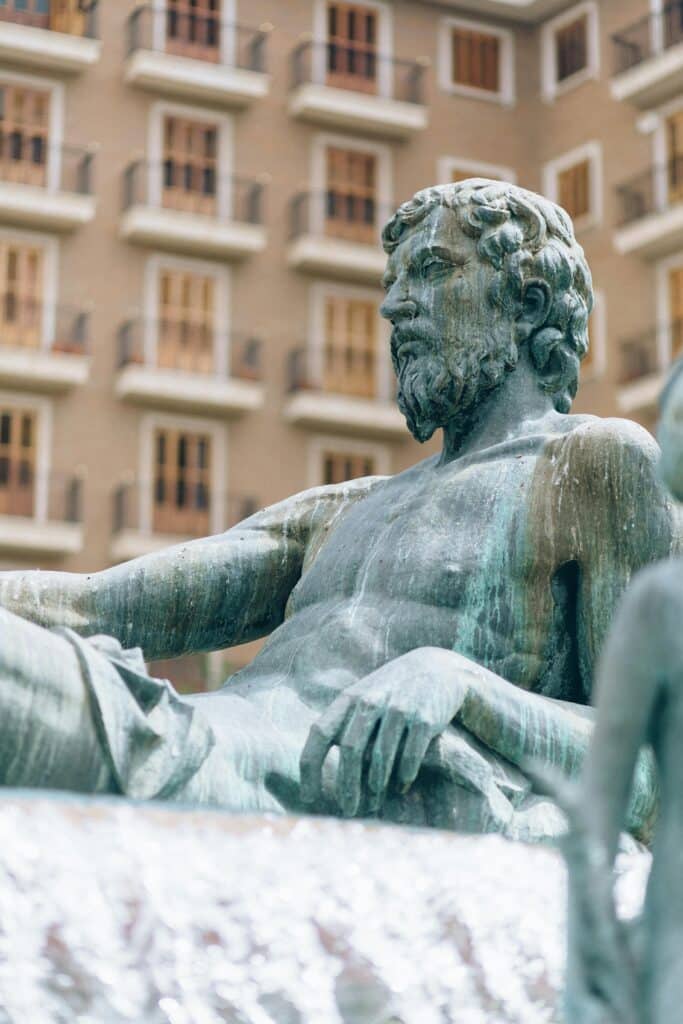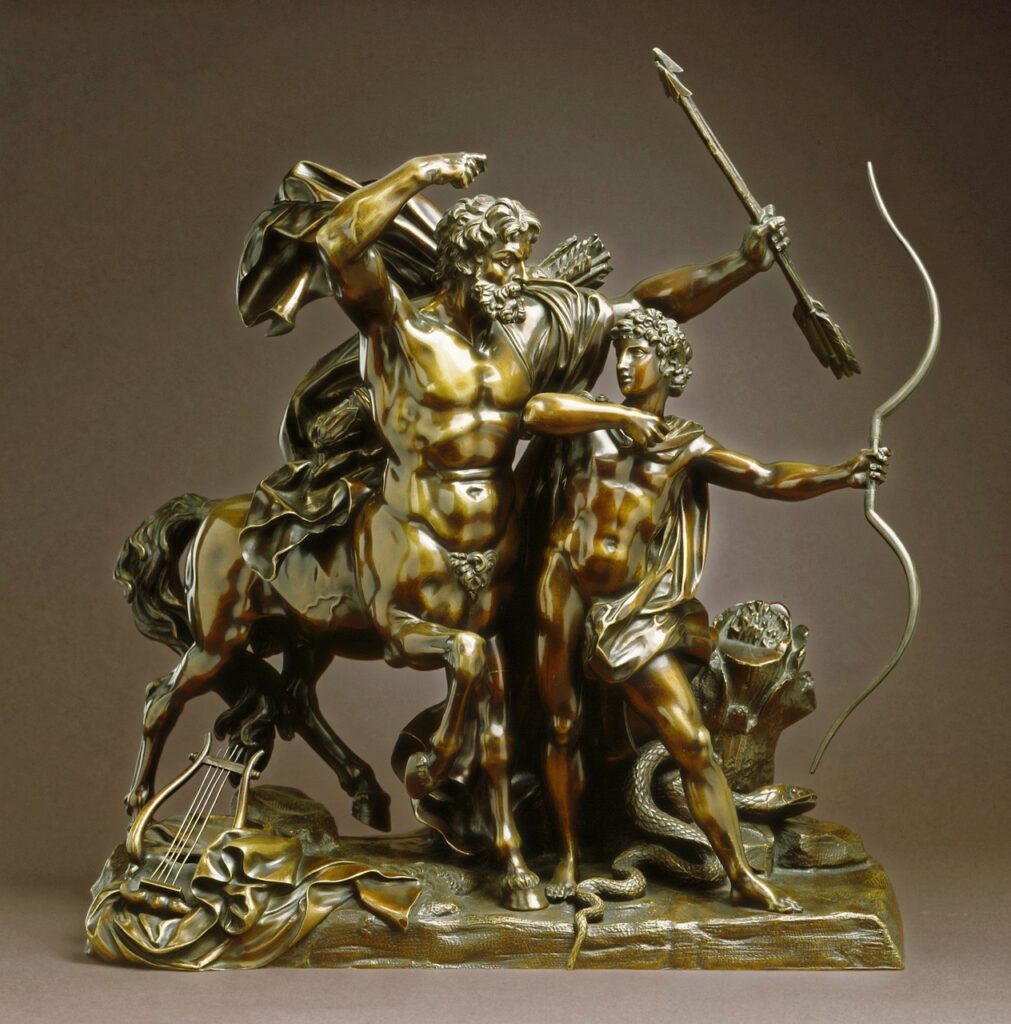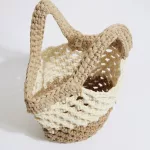Bronze: Forging history, creating eternity
Bronze, an alloy of copper and tin, has had a profound impact on the history of human civilization. Discovered in Mesopotamia, it rapidly influenced architecture, enriched art, transformed weaponry and stimulated sculpture. This metal, both durable and versatile, embodied technical innovation in ancient societies. Even today, it plays an important role in contemporary art and certain industrial sectors. This article traces its origins, its many applications over the centuries and its continuing influence today. You’ll also discover some fascinating anecdotes about its use in ancient times and its key role in the development of civilizations.
The First Steps of Bronze: Birth of a Revolutionary Metal
Bronze, an alloy of copper and tin, has played a major role in the history of ancient civilizations. Its first use dates back to Mesopotamia,Egypt and China, where it transformed the production of tools, weapons and artistic objects. Each civilization discovered and used this metal according to its needs and geographical specificities.
Mesopotamia: the cradle of bronze
The Mesopotamians were among the first to master the technique of bronze. They used this metal to manufacture agricultural tools, but also weapons, which enhanced their military power. Bronze expanded their range of handicrafts, contributing to the rise of Sumerian civilization.
Ancient Egypt: The art of sustainability
In Egypt, bronze became essential for the manufacture of precise tools and remarkably detailed statues. The Egyptians also used it to design musical instruments and create refined jewelry. This metal stood the test of time particularly well, which explains its success. Many bronze statues have survived to the present day in almost untouched condition.
China: The first alloys
In China, the first bronze alloys were used primarily to create ritual objects of great symbolic value. The metal was melted in complex molds to produce vases and ceremonial weapons. The Chinese have developed a unique know-how, particularly in the manufacture of bronzes used for ancestral rituals.
The emergence of copper-tin: A revolutionary metal
It was born from the combination of pewter and copper, and this mixture revolutionized the manufacture of objects. The metal is harder than pure copper, but also more malleable than iron, making it ideal for the creation of many objects. This unique blend marked the transition from the Stone Age to the Bronze Age, triggering a technological revolution.
The military revolution
Bronze has had a major impact on the art of warfare. For example, the first bronze swords replaced stone weapons, offering greater efficiency and resistance. This enabled early armies to equip themselves more robustly, and Mesopotamian armies took advantage of this to expand their empire.
A perfect blend of strength and flexibility
This metal stands out for its unique characteristics. Thanks to its durability, corrosion resistance and malleability, it has played a central role in many civilizations.
Durability and wear resistance
Bronze is characterized by its exceptional longevity. It does not degrade easily, making it the material of choice for monuments andfunctional objects.. For example, the famous bronzes from Riacetwo Greek statues discovered underwater, have survived over 2,000 years in remarkable condition, demonstrating the resistance of bronze to the wear and tear of time.
Corrosion resistance
Another key property of bronze is its resistance to corrosion. Even when exposed to the elements, it does not rust like iron. This characteristic has made it possible to preserve many bronze objects, from coins to ritual vases. Archaeologists have found many Greek bronze coins, almost intact despite their great age.
Malleable and easy to manufacture
Bronze is also malleable, making it ideal for creating intricate, detailed objects. Craftsmen of the past were able to use it to make high-quality weapons and tools. For example, bronze swords were not only stronger but also more effective in combat, giving ancient armies a decisive advantage in battle. What’s more, its malleability enabled the creation of more refined sculptures, such as those found on Greek temples.
The impact of bronze on war and art
The use of bronze facilitated advances in craftsmanship and changed the course of many battles. Armies equipped with this alloy surpassed their enemies thanks to more resistant armor and weapons. For example, the Greeks and Romans produced shields capable of repelling blows and protecting soldiers from projectiles.
It also played a key role in the creation of monumental sculptures. Greek statues, such as those by Phidias, are among the most famous and bear witness to the importance of this metal inancient art.
The use of bronze in art and sculpture
Bronze has played an essential role in art and sculpture since antiquity. From ancient Greek sculptures to modern works, it has been used to create high-quality pieces. Its durability, malleability and unique visual appeal have made it the metal of choice for artists throughout the ages.
The emblematic alloy of Greek culture
The ancient Greeks were pioneers in the use of bronze for their sculptures. These works testify to great finesse and the importance attached to aesthetics. The Riace bronzes, two statues discovered at sea in 1972, are among the most famous examples from this period. They perfectly illustrate the mastery of bronze art through realistic details and an unrivalled sense of proportion.
The Greeks also used this metal to make religious statues and public monuments of great symbolic value. The material played a central role in their spiritual and civic life, strengthening their bond with the deities. For example, they often created statues of gods such as Zeus or Athena to honor them.
The Renaissance: the fusion of technique and artistic expression
During the Renaissance, bronze regained its place in European art, particularly in Italy. Donatello, one of the greatest sculptors of the Renaissance, used bronze for his iconic sculptures. His bronze David remains one of the most admired works of the period. He also used innovative techniques to render anatomical details with great precision, marking a turning point in bronze sculpture.
Bronze enabled Renaissance artists to create three-dimensional sculptures with fine detail, an important advance on the more rigid marble sculptures of antiquity.
The Statue of Liberty: A world symbol
Another modern example is the Statue of Liberty, which perfectly illustrates the adaptability of bronze to monumental sculptures. Frédéric Auguste Bartholdi designed this statue using an iron frame and an outer layer of repoussé bronze. Construction took place at the end of the 19th century and was completed in 1884. This monument, a gift from France to the United States, has become a worldwide symbol of freedom, and the bronze gives it exceptional resistance to the elements, ensuring its durability.
The evolution of bronze casting techniques
The evolution of bronze casting techniques has played a key role in its spread through the ages. The earliest methods, such as lost-wax casting, were already capable of creating complex sculptures. These techniques evolved over the centuries to offer greater finesse and precision. In the Middle Ages, founders used sand molds for their creations. Later, the Renaissance rediscovered wax casting, enabling even more detailed reproductions.
In the 20th century, foundrymen perfected gravity casting, followed by pressure casting. These innovations facilitated the mass production of large-scale sculptures. They enabled artists to create modern works while preserving the artistic richness of bronze.
Bronze in ancient civilizations: A history of innovation
Bronze has played an essential role in ancient civilizations. It was used to create weapons, tools, coins and ornaments. Thanks to its exceptional properties, it enabled societies such as the Mesopotamians, Egyptians and Greeks to develop and innovate.
Its role in the Roman Empire
TheRoman Empire made innovative use of bronze. They mainly used it to make coins and imposing statues. It enabled the Romans to create enduring sculptures representing their gods, heroes and emperors. It was also used to mint coins, essential to the empire’s economy.
The Romans often used bronze coins for transactions, while large statues symbolized power and prestige.
An alloy for Greek monuments
The Greeks also used bronze for their temples and monuments. It was a sacred metal, often associated with the gods. Bronze statues were common in places of worship and public squares. These sculptures were often erected to honor heroes or commemorate important events.
Greek temples frequently contained bronze elements, such as doors or statues of the gods, demonstrating the wealth and devotion of Greek civilization to its religious beliefs.
A sacred material at the heart of ancient temples
Greek temples were sometimes home to large bronze ornaments, used not only for statues but also for architectural elements. One of the most famous examples is the statue of Zeus at Olympia, by Phidias. This imposing work represented the Greek god, combining bronze and gold in a remarkable masterpiece.
Making bronze: Art and technique
Bronze-making is a complex process that combines art and technique. As far back as antiquity, craftsmen used melting and casting methods to create bronze objects. These techniques have evolved over the centuries, enabling the creation of ever more refined and detailed sculptures andtools.
Bronze melting process
The bronze-making process begins with the smelting of copper andtin, two metals essential to the creation of the alloy. Craftsmen would heat these metals to high temperatures, around 1000°C, to mix them and obtain a homogeneous alloy. Once the metal had melted, the bronze became liquid and ready for casting.
Ancient craftsmen used primitive clay kilns to reach the temperature required for fusion. Themelting stage was crucial. Too low a temperature could render the alloy brittle, while too high a temperature could alter its properties, making it less resistant.
Bronze casting
After melting, craftsmen poured the liquid bronze into molds made of clay or sand. The lost-wax casting technique was still widely used for its precision. First, they made a wax model, which they surrounded with sand or clay. Once heated, the model lost its wax, leaving an empty space for the molten metal.
Casting enabled the creation of fine, detailed objects such as weapons, statues and coins. This technique enabled craftsmen to reproduce precise details, offering great creative freedom.
The secrets of ancient craftsmen
Ancient craftsmen had secret techniques for obtaining perfect bronze. They used special alloys to enhance the metal’s durability. For example, the addition of phosphorus increased corrosion resistance, which can still be seen today in bronze objects found in archaeological digs. Some craftsmen even mixedaluminum or nickel to make bronze more resistant to shock and wear.
These techniques, often passed down orally, enabled ancient civilizations to create bronze objects that have endured for centuries. Numerous bronze statues and tools discovered in the ruins demonstrate the extent to which craftsmen mastered their art.
The use and evolution of bronze between the Middle Ages and the Renaissance
Bronze played a central role in the Middle Ages and Renaissance, evolving in many fields such as architecture, sculpture and the creation ofmusical instruments. Its ability to be both malleable and durable made it an ideal material for a variety of applications.
Metal in the service of architecture
In the Middle Ages, bronze was used for important architectural works. For example, the doors to Florence’s Baptistery, designed by Lorenzo Ghiberti between 1425 and 1452, are an emblematic work of art. These doors, also known as the “Gates of Paradise”, feature bronze reliefs depicting biblical scenes. Their realism and fine craftsmanship make them a model of excellence in bronze art, influencing Western sculpture for centuries.
Cathedrals and churches of the time were also decorated with bronze elements, such as doors, candlesticks and window frames. It enabled craftsmen to create durable, artistic ornaments that would stand the test of time.
A master alloy sculptor
During the Renaissance, bronze was rediscovered as a sculptural material, giving rise to large-scale works. Donatello, one of the greatest sculptors of this period, used this metal to create his famous statue of David. This bronze, depicting the victorious young David, is an example of the technical mastery of bronze by Renaissance craftsmen. Not only did he breathe new life into bronze sculpture, he also introduced innovative techniques to make the figures more dynamic and realistic.
Other artists such as Michelangelo and Verrocchio also used bronze to create monumental works, redefining the boundaries of sculptural art. Renaissance artists learned to play with proportions and create natural forms, which was made possible by the unique properties of bronze.
Between resonance and musical tradition
In the Middle Ages, craftsmen used bronze to make bells with a rich, deep, resonant sound. These bells punctuated the day, marked the hours and accompanied religious ceremonies in churches and monasteries. It was also used to create other instruments, such as drums, cymbals and musical plates. Each instrument offered a distinctive sound, appreciated for its power and clarity. Bronze bells, in particular, called the faithful to prayer and structured religious life.
Renaissance craftsmen
Renaissance craftsmen not only rediscovered ancient lost-wax casting techniques, but also introduced innovations that enabled the production of more complex sculptures. Michelangelo, for example, used casting techniques to create reproductions of bronze statues from wax models. These craftsmen perfected the technique by experimenting with stronger bronze alloys and adapting the methods of the ancient Roman and Greek masters.
Innovations in metal: from applications to key sectors
Bronze plays a crucial role in modern industry thanks to its exceptional characteristics. Its corrosion resistance, durability and malleability mean it can be used in a wide range of applications, from engines and precision instruments toarchitecture and industrial equipment.
A key material for industrial applications
Bronze is widely used in industrial and mechanical components due to its outstanding technical properties. Modern electric motors often incorporate bronze in their rotors and stators to optimize performance. The metal is ideally suited to moving mechanisms, thanks to its low friction and durability. Power plant turbines, particularly in hydropower generation, are often designed in bronze.
Thanks to its resistance to high temperatures, bronze can operate in extreme conditions without deforming. It is also used to manufacture bearings. These components are essential in industrial machinery, as they effectively reduce wear due to friction.
Modern and traditional architectural forms
Bronze blends perfectly with modern architecture, as much for its appearance as for its technical performance. For example, it is often used in facade cladding to enhance the durability of buildings. Its natural elegance and ability to age harmoniously appeal to many architects. It is also used in the manufacture of doors and windows, where safety and aesthetics are essential.
Bronze staircases and banisters are also common in prestigious modern buildings. They add a touch of sophistication while being resistant to wear and corrosion.
Navigation and marine engineering: the choice of metal
Themarine industry also uses bronze for critical applications. It is widely used in the manufacture of underwater mechanisms and parts. For example, bronze boat propellers are resistant to salt water and water abrasion, ensuring long-term performance. It is also used in the manufacture of valves, bearings and other components exposed to harsh conditions.
Marine cooling systems, such as those for boat engines, benefit from bronze’s corrosion resistance, a crucial factor in ensuring equipment durability.
An ancient alloy in modern technology
Modern technologies also exploit bronze, even in highly specialized fields such as electronic instruments. For example, some electronic connectors incorporate this metal because of its electrical conductivity. Bronze is also used in the manufacture of high-precision sensors and components for communication systems. Its use in these cutting-edge sectors confirms its importance in today’s industry.
Understanding Bronze Varieties and Their Uses
Bronze comes in many forms, each with its own specific properties. Depending on the copper and tin content, each type of bronze is suitable for a variety of uses. From industry to art, each bronze alloy meets distinct needs.
When tin increases metal strength tenfold
High-tin bronze stands out for its mechanical properties and exceptional corrosion resistance. By increasing the tin content, the alloy becomes harder, stronger and more durable in the face of extreme conditions. This strength makes it the material of choice for industrial applications requiring high reliability.
Manufacturers use it to produce robust mechanisms such as pumps, valves and bearings. This type of bronze is also used to design cutting tools and parts subject to high pressure.
When color sublimates matter
Red bronze contains a higher proportion of copper, giving it a characteristic reddish hue. It is appreciated for its beauty and longevity. Its malleability and corrosion resistance make it an ideal choice for luxury objects and decorative applications.
Red bronze jewelry, such as bracelets and necklaces, is both elegant and resilient. This material was also used to make medals, medallions and coins, particularly in Antiquity. Artists appreciate this variety of bronze for its ability to melt easily and be modeled with precision.
Ancient coins: the use of a durable alloy
The Greeks and Romans made extensive use of this alloy to manufacture coins. These coins were struck with molds and used to facilitate trade within their empires. The Romans, for example, used bronze coins to pay soldiers and finance infrastructure projects. Bronze coins were not only durable, but also easy to produce in large quantities.
Today, numerous bronze coins discovered in archaeological digs testify to the importance of this metal in the economic exchanges of Antiquity. Some pieces, such as those minted in Alexandria and Rome, can still be seen in museum collections around the world.
Metal Heritage through Art and Technology
Bronze has left a deep imprint on modern culture, influencing art,architecture and even film. This metal continues to embody values of durability, prestige andexcellence in contemporary creations.
The Influence of Bronze in Art and Architecture
In modern architecture, bronze stands out for its aesthetic qualities, robustness and remarkable longevity. Many contemporary works, such as monumental sculptures, are inspired by this age-old heritage. Bronze is also the material of choice for decorative elements in prestigious buildings. It reinforces the luxurious and timeless character of these places.
Bronze in Popular Culture
Bronze also influences popular culture, appearing in recent films and modern works of art with strong symbolic significance. This noble metal often evokes strength, resistance and prestige. For example, many films associate this metal with heroic characters or significant events. It is also found in collectors’ items and trophies, such as the famous golden bronze Oscars, symbols of cinematic excellence.
Anecdote: Bronze in Modern Sculpture
Modern artists such as Rodin have reused this metal to create imposing, expressive sculptures. Its castability and malleability allow for dynamic forms and fascinating textures. Rodin’s The Thinker, for example, is a bronze sculpture that embodies the depth of human thought and remains a timeless symbol of modern culture.
Bronze Care and Conservation
Bronze is a durable metal, but it requires regular maintenance to maintain its lustrous appearance and avoid corrosion. Whether for sculptures, jewelry or decorative objects, every bronze piece must be treated with care.
Practical Bronze Care Tips
To maintain bronze, clean the surface regularly with a soft, dry cloth to remove dust. For stubborn stains, gently apply a mixture of vinegar and olive oil. This mixture effectively cleans the metal while preserving its natural shine.
Avoid aggressive chemicals, as they can damage the metal surface. It is also advisable to repeat maintenance every six months, especially for items exposed outdoors.
Tip: How to prevent bronze corrosion
To avoid corrosion, it’s essential to keep bronze in a dry, clean environment. Moisture accelerates oxidation, creating a greenish patina. You can apply a thin layer of special bronze wax to protect the surface. This creates a barrier against humidity and dirt, while maintaining the metal’s shine.
We also recommend keeping bronze objects in a cool, dry place, away from sources of heat and humidity.
Anecdote: The Secret Techniques of Museum Curators
Museum curators apply precise techniques to maintain antique bronzes without damaging them. For example, some pieces rest in controlled atmospheres, where temperature and humidity are rigorously monitored. These methods slow down the natural oxidation of bronze while preserving the fine details of ancient sculptures.
In museums, experts use mild solvents and apply protective coatings to preserve each object. Thanks to these practices, many bronze sculptures from antiquity can now be seen in exhibitions around the world.
